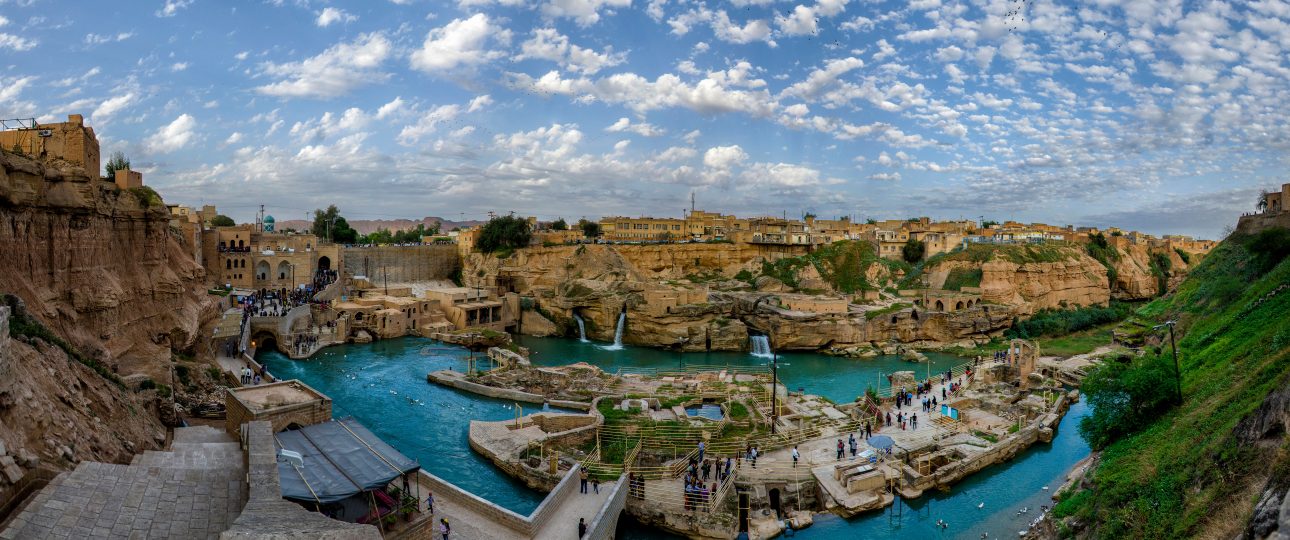Exploring Shushtar’s History
Shushtar Historical Hydraulic System in Iran is a marvel of ancient engineering. This UNESCO World Heritage Site dates back to the 5th century BCE and showcases the ingenuity of the Achaemenid Empire, with significant expansions during the Sassanid period. The system was crucial for irrigation, supporting the region’s agriculture and economy. Walking through the remains, you can appreciate the sophisticated design and the historical significance of this engineering feat.
Unique Features of Shushtar
Shushtar’s hydraulic system is not just a relic of the past; it’s a complex network of dams, bridges, canals, and structures. Here are some highlights:
The Watermills
The watermills are a standout feature. Powered by the flowing water through the canals, these mills were essential for grinding grains. As you explore, you can imagine the bustling activity that once filled this area, a testament to the practical use of natural resources.
The Waterfalls
The system’s canals create a series of waterfalls that are both functional and beautiful. These waterfalls offer a serene environment, perfect for photography and quiet reflection. The sight of water cascading through ancient channels is a reminder of the system’s enduring legacy.
The Borj Ayar Bridge-Dam
Among the 13 sites that make up the hydraulic system, the Borj Ayar Bridge-Dam stands out. This structure exemplifies the dual purpose of the system: controlling water flow and providing a crossing point. It’s a remarkable example of ancient multi-functional engineering.
Best Time to Visit
Shushtar experiences extreme temperatures, with hot summers and cold winters. The best time to visit is during spring or fall when the weather is milder. This allows for comfortable exploration of the outdoor sites without the discomfort of extreme heat or cold.
How to Get There
The nearest major airport is in Ahvaz, about an hour’s drive from Shushtar. Ahvaz is well-connected to major cities in Iran and some international destinations. From Ahvaz, you can take a taxi or bus to Shushtar. Alternatively, trains run regularly from Tehran and other major cities, providing a scenic route to this historical destination.
Local Transportation
Once in Shushtar, getting around is straightforward. The town is compact, making it easy to explore on foot. For those who prefer, bicycles or motorbikes are available for hire, allowing you to navigate the narrow streets and discover the town’s hidden corners.
Summary of Facts
- Shushtar Historical Hydraulic System is a UNESCO World Heritage Site.
- It dates back to the 5th century BCE and was expanded during the Sassanid period.
- The system includes 13 interconnected sites, featuring dams, bridges, and canals.
- The watermills were used for grinding grains, powered by canal water.
- The waterfalls provide a tranquil and picturesque setting.
- The Borj Ayar Bridge-Dam is a notable structure within the system.
- The best time to visit is during spring or fall to avoid extreme temperatures.
- The nearest major airport is in Ahvaz, about an hour from Shushtar.
- Local transportation is easy, with options for walking, biking, or motorbiking.



